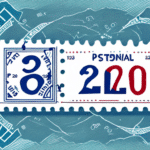Postage Rate Increases in 2023: Comprehensive Overview
If you rely on the postal service for your business or personal needs, it's crucial to be aware that postage rates are set to increase in 2023. The United States Postal Service (USPS) has announced plans to raise rates across the board to keep up with rising operational costs. This article provides an in-depth analysis of the reasons behind the increase, its impact on small businesses, historical context, contributing factors, international comparisons, cost-saving strategies, and future outlook.
Impact of Postage Rate Increases on Small Businesses
For small businesses that depend on mailing products or sending invoices, the upcoming postage rate increase could significantly affect the bottom line. USPS remains one of the most cost-effective options for shipping packages and letters, and any rate hikes may erode profit margins or necessitate price adjustments.
- Profit Margins: Increased shipping costs can reduce overall profitability.
- Pricing Strategies: Businesses might need to pass additional costs onto customers.
- Competitive Edge: Higher postage costs can impact the ability to compete with businesses using more affordable shipping alternatives.
Staying informed about specific rate changes allows businesses to adjust their budgets and shipping strategies effectively. According to the USPS Office of Inspector General report, small businesses make up a significant portion of USPS users, highlighting the importance of these rate adjustments.
The Evolution and Determination of Postage Rates
Historical Context
Postal rates in the United States have evolved since the inception of the postal service. Initially, rates were based on the distance and weight of the mail. Over time, factors such as inflation, operational costs, and technological advancements have influenced rate changes.
Current Determination Process
Today, the USPS operates as an independent agency regulated by Congress and overseen by a Board of Governors. The Postal Regulatory Commission (PRC) ensures that postal rates are fair and reasonable. However, USPS retains significant control over rate setting, balancing factors like delivery costs, employee wages, and fuel prices.
Technological Advancements
With the decline in traditional mail volumes due to digital communication, USPS has had to adapt by implementing technologies such as automated sorting machines and exploring delivery drones. These advancements aim to reduce costs and potentially stabilize postage rates in the future.
Factors Driving Postage Rate Increases
Operational Costs
Increases in labor costs, fuel prices, and maintenance of postal infrastructure contribute to rising operational expenses. The USPS manages a vast network of post offices, sorting facilities, and delivery vehicles, all of which require regular upkeep.
Technological Shifts
The shift from traditional mail to digital alternatives has decreased revenue, prompting USPS to raise rates to compensate. Additionally, investments in new technologies to improve efficiency add to the financial pressures.
Regulatory and Policy Changes
Government regulations, such as changes in trade policies or tax structures, can impact postal rates. For instance, alterations in international trade agreements may affect the costs associated with importing or exporting mail.
Economic Factors
Inflation and economic downturns influence USPS's financial health, necessitating rate adjustments to cover increased costs and maintain service levels.
International Comparison of Postage Rates
Even with the impending increase, USPS rates remain competitive compared to international postal services. However, rates vary based on destination, package weight, and shipping speed.
Service Levels
Different countries offer varying levels of service. Some may provide faster delivery times or more reliable tracking, which can justify higher rates.
Customs and Taxes
International shipments are subject to customs fees and taxes, which vary by country and the value of the items. It's essential to research these costs when choosing a carrier.
Comparative Analysis
According to the World Postal Codes, while USPS offers competitive international rates, other carriers like Royal Mail and Canada Post may offer different pricing structures and services tailored to specific regions.
Strategies to Reduce Postage Costs for Businesses
Adopt Digital Communication
Switching to digital methods for invoicing and customer communications can significantly reduce mailing expenses.
Negotiate with Carriers
Negotiating with USPS for better rates or exploring alternative carriers, such as regional carriers or private couriers, can lead to cost savings.
Optimize Package Dimensions and Weight
Being strategic about the size and weight of packages can lower shipping rates. Using lightweight materials and optimizing packaging can make a difference.
Utilize Bulk Mailing Discounts
Businesses that send large volumes of mail can take advantage of bulk mailing discounts offered by USPS.
Implement Pre-Sorting Services
Pre-sorting mail can streamline the mailing process and reduce costs. Services like automated sorting machines improve efficiency and lower expenses.
Regularly Review Postage Expenses
Continuous analysis of mailing patterns and postage usage can identify areas for improvement and potential cost reductions.
Understanding USPS Mail Classes: First-Class, Priority, and Express
First-Class Mail
First-class mail is the most economical option, suitable for lightweight packages and letters. It offers reliable delivery with standard tracking.
Priority Mail
Priority mail provides faster shipping speeds and includes free tracking, making it ideal for time-sensitive or valuable items. According to the USPS 2023 Mail Handbook, Priority Mail typically delivers within 1-3 business days.
Express Mail
Express mail is the premium USPS service, offering guaranteed overnight delivery for urgent packages. It includes features like signature confirmation and insurance.
Seasonal Variations
Delivery times may vary during peak seasons, such as holidays, due to increased mail volumes. Planning ahead can help mitigate potential delays.
Package Specifications
Each mail class has specific size and weight restrictions. It's important to consult the USPS guidelines to ensure compliance and avoid additional fees.
Modernization Efforts and Efficiency Improvements by USPS
Technological Innovations
The USPS has invested in automated sorting machines and advanced package tracking systems to enhance delivery efficiency and reduce errors.
Alternative Delivery Methods
Exploring methods like Sunday deliveries in select areas aims to improve service times and meet customer demand.
Environmental Initiatives
Efforts to reduce the environmental impact include testing electric and hybrid delivery vehicles, using sustainable packaging materials, and implementing recycling programs within facilities.
Cost-Saving Measures
By adopting green technologies and streamlining operations, USPS aims to lower operational costs, which could help mitigate future rate increases.
Future Outlook
Ongoing modernization projects are expected to enhance USPS's operational efficiency and customer satisfaction, positioning the postal service to better handle future challenges.
The Role of E-Commerce in USPS Revenue and Operations
Growth of Online Shopping
The surge in e-commerce has led to a substantial increase in package volume, boosting USPS revenue but also straining infrastructure.
Infrastructure Adaptation
To accommodate higher volumes, USPS has upgraded sorting facilities and expanded delivery networks. Automated sorting machines have significantly improved processing speeds.
Technological Enhancements
Real-time tracking and delivery notifications provide customers with up-to-date information, enhancing the overall shipping experience.
Partnerships with E-Commerce Platforms
Collaborations with major e-commerce players have streamlined package pickup and drop-off services, increasing convenience for customers.
Challenges and Opportunities
While e-commerce growth presents revenue opportunities, it also requires continuous investment in technology and infrastructure to meet demand.
Forever Stamps: A Smart Investment Against Rate Increases
Forever stamps offer a convenient way to lock in current postage rates for standard letters, regardless of future rate increases. This makes them a prudent investment for individuals and businesses anticipating higher postage costs.
- Cost Stability: Purchase stamps at current rates and use them even after rates rise.
- Convenience: Avoid the hassle of tracking and purchasing new stamps with each rate change.
- Financial Planning: Budgeting becomes easier with fixed mailing costs.
However, it’s important to note that USPS typically announces rate increases well in advance, allowing ample time to purchase Forever stamps before changes take effect. For more information on Forever stamps, visit the USPS Forever Stamps page.
Conclusion: Navigating the 2023 Postage Rate Increases
The upcoming postage rate increase is a significant development for anyone utilizing the postal service. By understanding the underlying reasons, assessing the impact on small businesses, comparing international rates, and implementing cost-saving strategies, individuals and businesses can effectively manage the changes. Additionally, exploring modernization efforts and leveraging Forever stamps can further mitigate the financial impact. Staying informed and proactive will ensure continued cost-effective and efficient mailing practices.






















